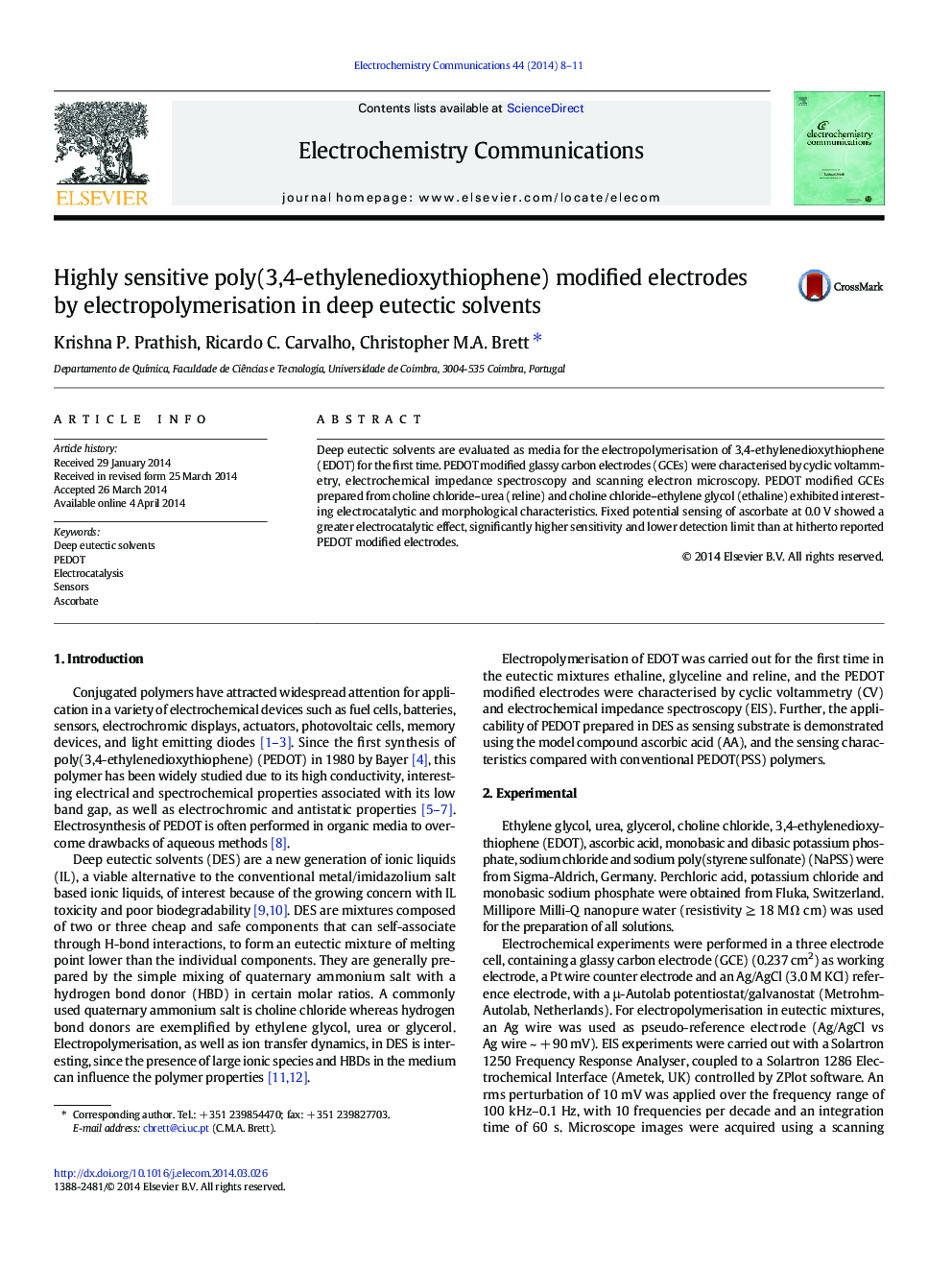| Article ID | Journal | Published Year | Pages | File Type |
|---|---|---|---|---|
| 179122 | Electrochemistry Communications | 2014 | 4 Pages |
•PEDOT by electropolymerisation in deep eutectic solvents (DES) for the first time•Role of hydrogen bond donors for tuning polymer characteristics•Urea based eutectic solvent shows the best potential for electrocatalysis•Superior sensing characteristics using PEDOT prepared from DES
Deep eutectic solvents are evaluated as media for the electropolymerisation of 3,4-ethylenedioxythiophene (EDOT) for the first time. PEDOT modified glassy carbon electrodes (GCEs) were characterised by cyclic voltammetry, electrochemical impedance spectroscopy and scanning electron microscopy. PEDOT modified GCEs prepared from choline chloride–urea (reline) and choline chloride–ethylene glycol (ethaline) exhibited interesting electrocatalytic and morphological characteristics. Fixed potential sensing of ascorbate at 0.0 V showed a greater electrocatalytic effect, significantly higher sensitivity and lower detection limit than at hitherto reported PEDOT modified electrodes.
Graphical abstractFigure optionsDownload full-size imageDownload as PowerPoint slide
